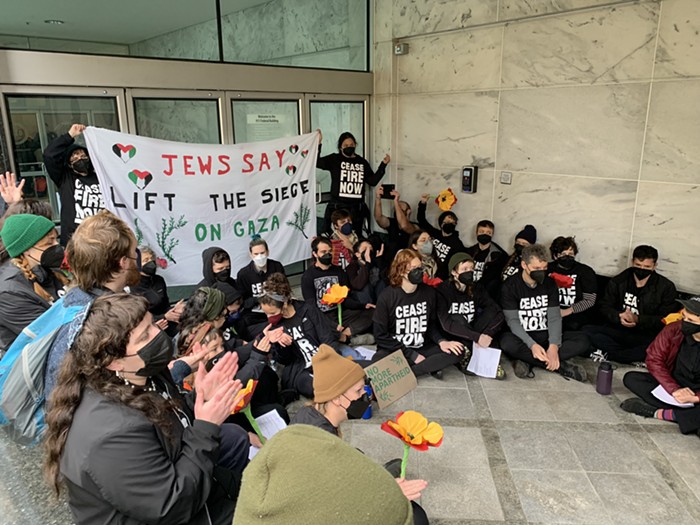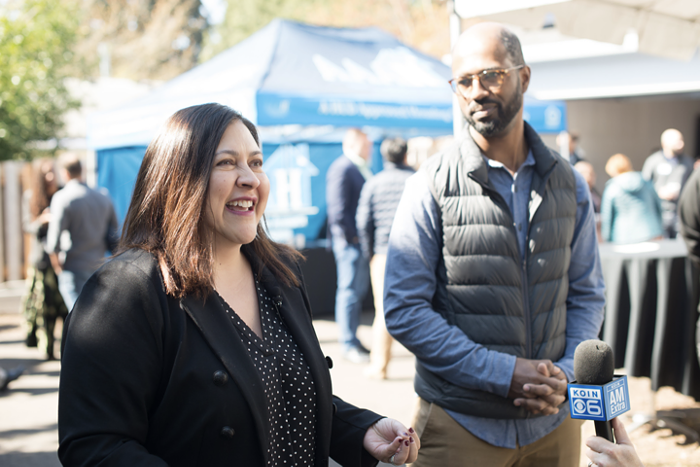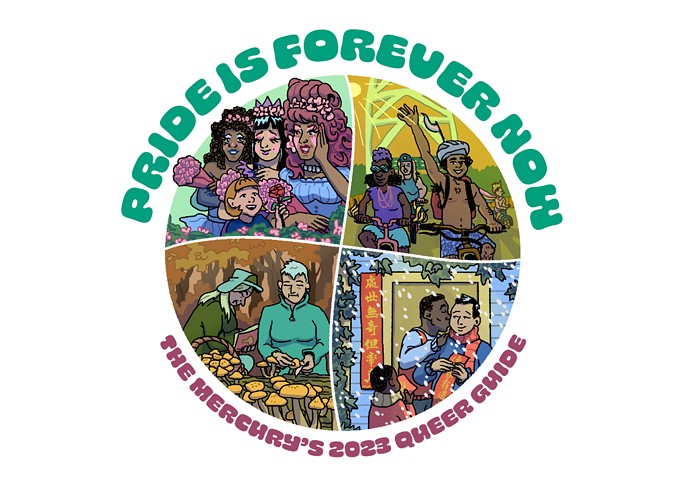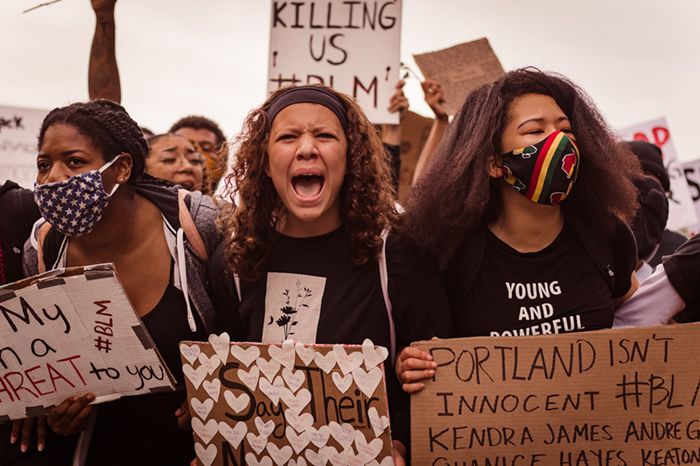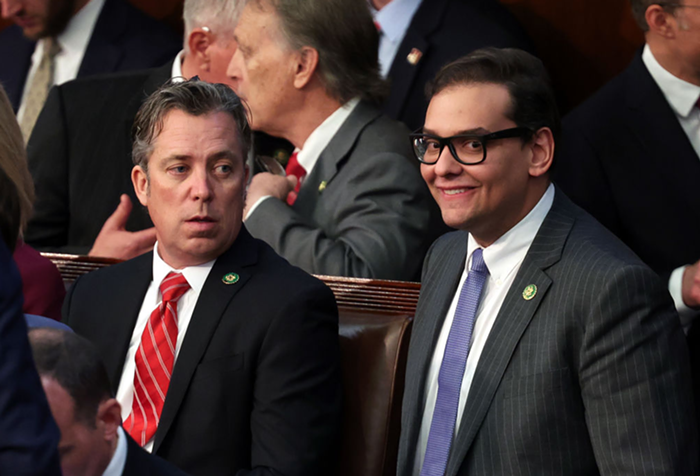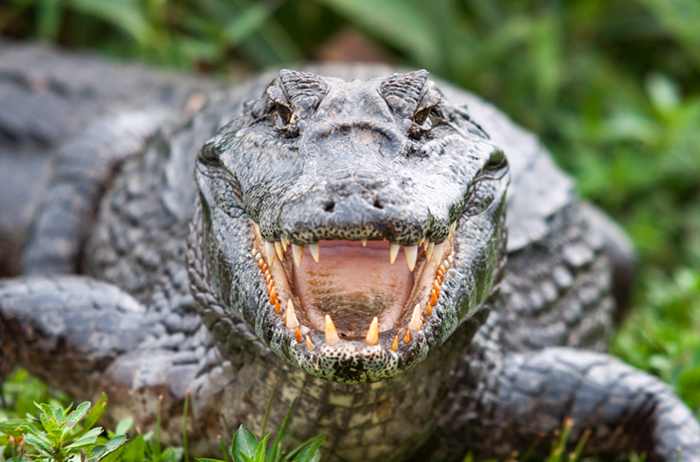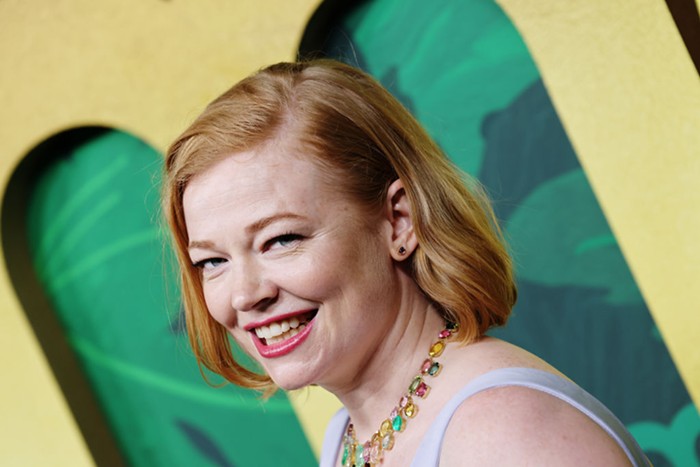Bicycle safety isn't exactly a new topic of discussion in Portland—after all, various magazines and organizations have voted Portland the best biking city in America. Much of these kudos are at least in part due to the safety measures the city has enacted, but with the tragic deaths of two cyclists in as many weeks, city leaders and bike activists have shifted into high gear, so to speak, scrambling to fix the numerous horrifying intersections that still pose certain death for two-wheelers.
Perhaps, though, it's more accurate to say that city leaders are scrambling to create a process to have a committee look at fixing the intersections—assuming they can find funding. That's how it works in the City of Portland, but there's little reason why something can't be done—now—to fix the worst of the worst, the intersections that could soon be the site of more ghost bikes.
The police bureau and the Portland Office of Transportation have data about which intersections have seen deaths and injuries as a result of bike-car collisions, but as a transportation staffer recently pointed out, there's no way to know yet which intersections are the scenes of near misses—collisions that could have happened as a result of horrible traffic engineering, but were avoided because of the attentiveness and quick thinking of both bikers and drivers.
Never ones to wait around for city government to fix the city's problems, we asked our bike-riding readers to tell us which intersections are the most dangerous based on their experiences (via blogtown.portlandmercury.com), where they've had collisions or near collisions. The results weren't unexpected—most of the intersections have already been identified by the city as problem areas, and were confirmed by our own terrifying experiences.
Last Friday, October 26, Commissioner Sam Adams held a meeting with transportation "stakeholders" and a press conference announcing a plan to build "bike boxes" at 14 of the city's problem intersections. The boxes would give bikers priority at the front of traffic lanes at intersections, in order to avoid the kind of "right hook" crash that claimed the life of Tracey Sparling a few weeks ago. As forward thinking as that plan is, it runs the risk of applying a one-size-fits-all solution to intersections that have different needs.
So without further ado, we present our list of the city's most dangerous intersections for bikes, along with some ideas for making them safer—immediately. In some cases, bike boxes are a good idea; in others, they fall short. But in every example, two things are clear: Something needs to be done, before another cyclist dies, and bikers, no matter how confident or experienced, need to treat these intersections with the highest caution.
#1: NE Broadway and N Williams
Anyone who's ever ridden this stretch of Northeast Portland won't be surprised that NE Broadway made the top of the list—a recent effort by the Oregonian to map bike collisions between 2003 and 2006 shows crashes at nearly every intersection along Broadway from 16th to the Broadway Bridge. Even though it's not the scene of the most collisions (that dubious honor belongs to the intersection of Broadway and N Flint), the stretch of Broadway that crosses NE Williams is hairy enough to give even confident cyclists a case of the cold sweats.
The problem: A combination of the worst conditions—high traffic, multiple confusing intersections, and, most dangerously, two traffic lanes that turn on to the I-5 onramp. The westbound bike lane moves to the left of right-turning traffic, but is still to the right of a car lane that turns right onto the freeway. A sign hangs above the intersection warning drivers of this, but rush hour commuters are likely to ignore it. The result: Bikers suddenly find themselves smashed between two lanes of right-turning cars.
Possible solution: Move the bike lane to the right of the road, along the curb. At the intersection, put up a bike-only signal light, which could be tripped by a sensor in the lane. This way, bikes and right-turning traffic never have to engage in a deadly right-of-way negotiation.
#2: NW Broadway and Hoyt
Like NW Lovejoy and 9th and N Interstate and Greeley, NW Broadway at Hoyt is at the end of a downhill, where bikers pick up speed. And because it's so close to the main post office, large trucks frequently turn right onto Hoyt, crossing the bike lane—again, it's a recipe for a tragedy like the one that killed Brett Jarolimek, who died when he collided with a right-turning garbage truck.
A bike box would protect cyclists stopped at the light from being run over by large trucks, but does little good when the light is green. Possible solution: A bike-only signal that keeps right-turning traffic and bikes from colliding, or—at the very least—a sign that reminds drivers that bikes are traveling straight through the lane next to them.
#3: NW Lovejoy and NW 9th
This intersection is at the end of the relatively steep ramp off of the west end of the Broadway Bridge. Bikes pick up a great deal of speed coming down the hill, made even worse if there's a green light at 9th, where cars can turn right. The combination of cyclists' speed, a sharp right turn, and a high chance the cyclist will be in a right-turning car's blind spot creates a scenario similar to the one on N Interstate and Greeley that took the life of Brett Jarolimek a week and a half ago. It's a textbook setup for a deadly right hook crash.
The Office of Transportation—at the prodding of Adams—is considering a bike box at the intersection. That will protect bikers when they're stopped at a red light, but is less useful if the light is green. Another possible solution: Adding a sensor at the top of the hill that will trigger a sign at the intersection alerting cars that a cyclist is approaching. Additionally, the city should consider measures to slow cyclists' speed on the downhill—like bike speed bumps.
#4: SW 14th and Burnside
The intersection where young Tracey Sparling was recently killed by a right-turning cement mixer remains among the most dangerous intersections in the city. Like most of the others, it's a combination of nightmarish factors—large trucks and tour vans parked in the loading zone along 14th in front of the Crystal Ballroom (sometimes overlapping the bike lane), a downhill, a sharp-right turn, drivers anxious to get on the freeway, and three narrow auto lanes.
Possible solution: A bike box, to start. Beyond that, 14th is already squeezed so tight that widening the lanes can only happen by removing one of them. Alternately, the Crystal Ballroom loading zone could be moved back by 30 or 50 feet (which would eliminate the on-street parking) in order to widen the road at the intersection, giving bikes more breathing room and more space to maneuver if something goes wrong.
#5: NW 16th and Everett
Recently, this intersection was the focus of an improvement by the Office of Transportation—they painted blue paint in the Everett bike lane as it crosses 16th, signaling to drivers that bikes have the right of way through the intersection. Unfortunately, the right turn that crosses over the bike lane is the route Westsiders use to get onto southbound 405—meaning drivers still aren't likely to pay attention to cyclists, the lane, or the large sign telling them to yield to cyclists.
Possible solution: A bike box to protect cyclists at red lights, potentially coupled with a "no turn on red" policy. Beyond that, a bike-only traffic signal is the only sure way to keep distracted drivers from crossing paths with cyclists.
#6: The Clusterhump at SE 12th and Sandy/Burnside
This intersection—or, more accurately, intersections—is and will always likely be a nightmare for cars, bikes, and pedestrians. Without completely redesigning the way traffic flows through it—in every conceivable direction—the safest thing the city can do for bikes is to strengthen and add to the bike boulevards around it.
Take, for instance, SE Ankeny, which is something of a bike freeway. It runs along Burnside, but without all of the traffic. The problem is where it crosses 11th and 12th, which feeds into the intersection of Sandy and Burnside. Because of that, the crossings can be just as hairy as the main intersection, but without the benefit of stoplights. Making the crossing safer will encourage more cyclists to take that route. Additionally, the entire area needs to be repaved—the numerous ruts and potholes are inconvenient for cars, but downright dangerous for vulnerable cyclists.
N Interstate and Greeley (Too Dangerous to Be Photographed)
The intersection where Brett Jarolimek was killed has been known to be dangerous for years, but it took his death to get something done. Sam Adams and the transportation department are considering a number of options to increase safety—including a bike box and a "cyclist approaching" sign that will be triggered by a sensor in the bike lane at the top of the hill. Still, the combination of a speedy downhill and numerous right-turning large trucks will keep the intersection dangerous. Another, more radical solution: closing off the right turn entirely, eliminating the chance for deadly right hooks.
